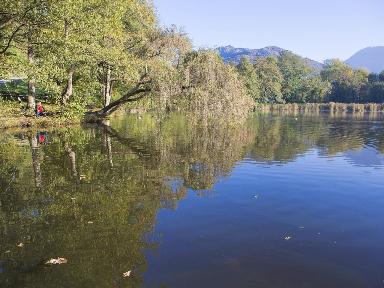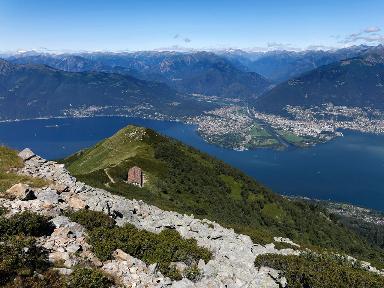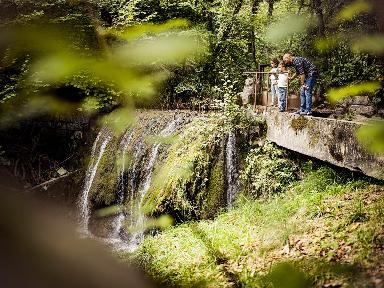
The Valle Morobbia sits along the join between the root zone of the central Alps and the crystalline basement of the Southern Alps, marked by a regional fault with a strongly tilted, east-west oriented surface: the Insubric Line. This structure runs from the Valtellina to Piemonte and started to form 25 million years ago (my) during the Oligo-Miocene period. A sideways slip of more than 60 km has been observed along the line.
To the north of the Insubric Line, on the right-hand side of the Valle Morobbia, is the Melirolo area of tonalite and gneiss, the latter deriving from Bregaglia rocks (30 my) deformed by movements along the fault. Immediately to the south of the Insubric Line are non-metamorphic lenses of Triassic dolomite (225?180 my). The southern side of the Valle Morobbia is comprised of the crystalline basement of the Southern Alps (Strona Ceneri zone), consisting of gneiss, mica and basic rocks from the Palaeozoic era (2500?300 my). Iron veins are only to be found on the left-hand side of the valley and form part of the extensive mining district that includes Dongo and Val Cavargna in Italy, as well as some nearby valleys in Ticino.
The minerals in the Valle Morobbia are predominantly iron sulphides, particularly pyrrhotite and pyrite with traces of chalcopyrite. The deposits are to be found along the faults, which were the preferred route travelled by mineral-rich fluids, and date back to the late Palaeozoic era (Carboniferous ? Permian, 345?225 my).
Features
- PARKS AND GARDENS Natural parks





